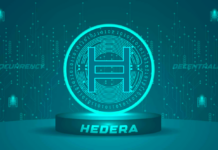- Optimistic rollups are perfect scaling solutions for the Ethereum network.
- They work on fraud-proof mechanisms to verify transactions.
What are optimistic rollups?
The optimistic rollups are layer-2 protocols, specially designed to scale the Ethereum network, that extend the throughput of the Ethereum base layer. They reduce the network congestion of the Ethereum mainnet by processing transactions off-chain. They offer a significant improvement in the transaction speed of the Ethereum network.
Although they are scaling solutions for the Ethereum network, they do not compromise the security of the network because they upload transaction details on the Ethereum mainchain that are fraud-proof, and the transaction data is stored elsewhere.
Optimistic rollups can offer 10x and even 100x faster transaction speed on the Ethereum chain. While this not only helps users to transact faster, this also makes transactions cheaper. As Ethereum processes those transactions first, which offers higher transaction fees, hence network participants often end up paying high transaction fees for processing their transactions faster.
Working on optimistic rollups
The operators of the optimistic rollups bundle a lot of transactions, and then they upload them on the Ethereum mainnet. This approach enables them to process multiple transactions simultaneously, and the various compression techniques they use allow them to reduce the amount of data posted on the Ethereum blockchain.
These rollups are known as optimistic because they pre-assume that all the transactions on the network are already valid. They do not upload validity proof of the transactions on the Ethereum mainnet. This differentiates zk rollups from optimistic rollups.
Optimistic rollups rely on fraud proof to ensure the security of the transactions. In this fraud proof way of verifying transactions, all the transactions must go through a time window before getting uploaded on the Ethereum network. In this time window, anyone can run a fraud-proof in which fraudulent transactions can be challenged once transactions go through this process. All the verified and secure transactions are then uploaded on the Ethereum network.
Benefits of Using Optimistic Rollups
- Higher transaction speed
These rollups process transactions more quickly by processing all the transactions on layer-2 and then uploading them on the main Ethereum chain hence reducing the congestion of the Ethereum network.
- Lower transaction fees
If these rollups will not function, then the Ethereum network itself will need to handle all the transactions and if Ethereum handles all the transactions, this will be very dangerous for the scalability of the Ethereum network as currently, it can handle only 15 – 30 transactions per seconds. Due to this network, participants will end up paying high transaction fees.
- Faster conformation time
Currently, on average, if a person performs transactions on the Ethereum network, then. They need to wait for at least 15 seconds to 3 minutes. This is very much for a blockchain like Ethereum. Hence optimistic rollups help to reduce this time by processing transactions fastly.
Types of Optimistic Rollups
- Execution model
These rollups work on the Ethereum Virtual Machine. This allows them to run smart contracts. These rollups can run most of the Ethereum smart contracts, and that too with minor changes to the smart contracts. These are best for running smart contracts.
Some of the common examples of the EVM compatible rollups are Optimism and Arbitrum.
- Data availability solutions
These systems use a third party or a centralized server to store the information of the whole data. Although decentralized storing solutions are much cheaper, they still do not have network security. Hence they store data on centralized servers.






















